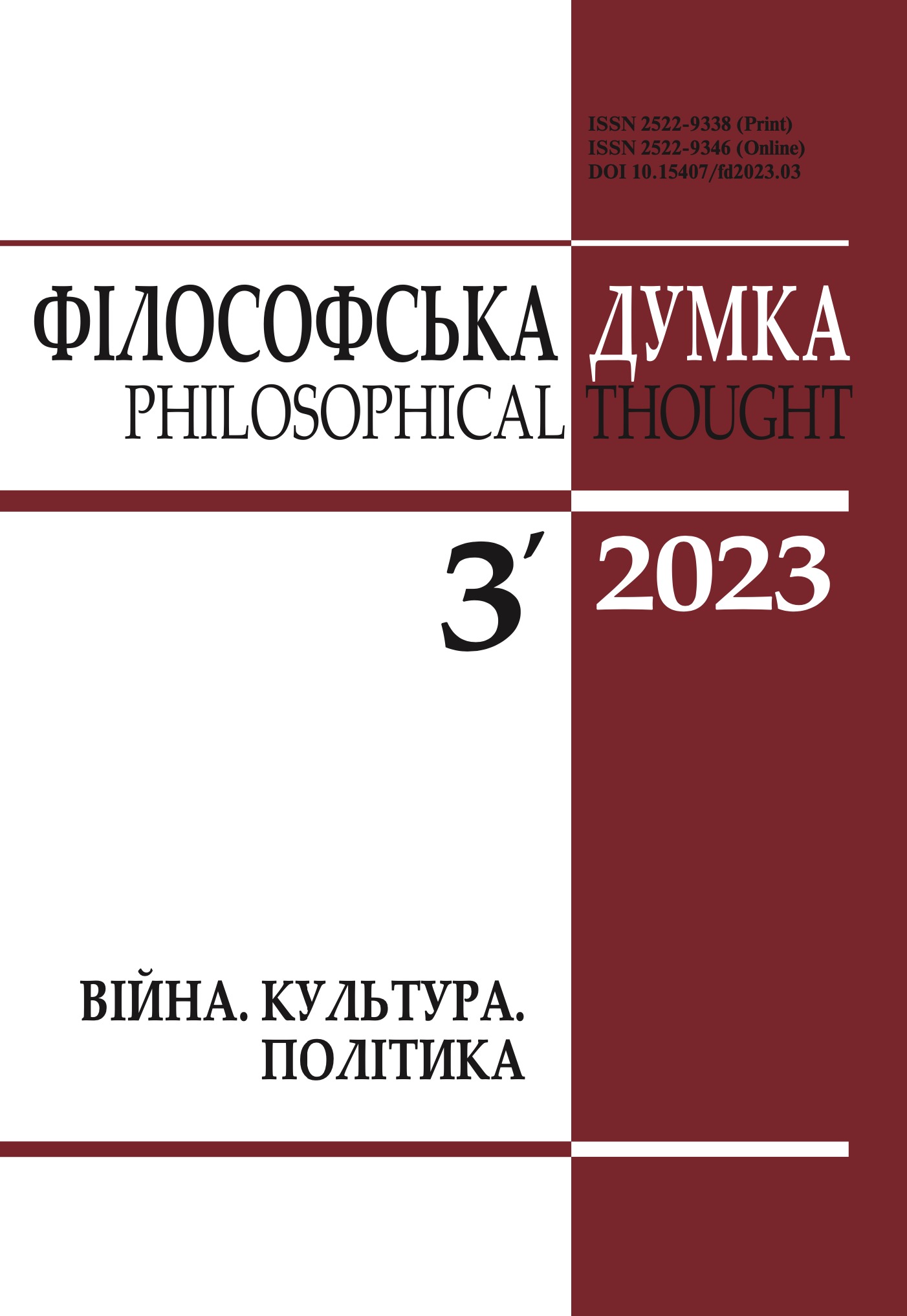FIVE KINDS OF IMMORTALITY
CULTURAL PHENOMENON: CASE STUDY
DOI:
https://doi.org/10.15407/fd2023.03.111Keywords:
immortality, finitude, justice, moral pessimism and optimism, good life, Faustian individual, digital media, personal authenticityAbstract
The author develops the idea that ancient Greek philosophy begins with attempts of the first theorists, especially Plato, to prove the immortality of the soul. For them, this meant, above all things, justifying that a person cannot escape moral responsibility or punishment for his wrongdoings. The author compares this kind of immortality, or this theory of immortality, to the ancient Greek concept of earthly immortality of the name. If a Greek had not achieved his glory in the creative realm of freedom (in politics, war, sports, knowledge, and arts), he did not get beyond the limits of his bodily existence. The first kind of immortality is also discussed in terms of Pla to’s moral pessimism, while the second kind of immortality is discussed in terms of moral optimism. Both kinds are considered in terms of the philosophical response to the question of a good and happy life. The third kind of immortality is defined by the author as Faustian immortality in the Modern Age. The concept of this kind of immortality is explained in terms of the Faus- tian individual, that is, based on J. W. Goethe’s idea of self-realization of personality through the activities of their native community. This kind of immortality is contrasted with the concept of escapist immortality, described by Russian artists, especially A. S. Pushkin and M. A. Bulgakov, as the greatest achievement of a modern creative person in the conditions of social unfreedom. Lastly, the concept of medial immortality is defined as a postmodern idea that the desired uniqueness of a personality is affirmed by its social acknowledgment via contemporary digital communication means, that is, medial means. The author’s main text contains important references to the Additions placed after the main text. To understand the dialogic nature of the research, Additions should be read alongside the main text, rather than after it.
References
Benedict, R. (1946). The Chrysanthemum and the Sword, Patterns of Japanese Culture. Boston: Houghton, Mifflin Company.
Cassin et al. (2014). Dictionary of Untranslatables. Princeton University Press.
https://doi.org/10.1515/9781400849918
Camus, A. (2015). Le Mythe de Sisyphe / Transl. from French by O. Zhupanskiy. [In Ukrainian]. PH "Portfel".
Goethe, J.W. (1986). Faust. Berlin, Weimar: Aufbau-Verlag.
Goethe, J.W. (2001). Faust / Transl. from German by M. Lukash. In: J.W. Goethe, Faust; Lyrics. [In Ukrainian]. Kyiv: Veselka.
Heidegger, M. (2006). Sein und Zeit. Tübingen: Max Niemeyer.
Mendelssohn, M. (1989). Phädon oder über die Unsterblichkeit der Seele in drei Gesprächen. In: M. Mendelssohn, Schriften über Religion und Aufklärung. Berlin: Union.
Kulakovskii, J.A. (2002). Death and Immortality in the Ancient Greek Descriptions. [In Russian]. In: Eschatology and Epicureanism in the Ancient World: Selected works (pp. 45-164). St. Petersburg: Aletheia.
Kundera, M. (2020). Immortality / Transl. from French by L. Kononovych. [In Ukrainian]. Lviv: Staryi Lev Publishing House.
Losev, A.F. (1957). The Ancient Mythology in its Historical Development. [In Russian]. Moscow: Uchpedgiz.
Rohde, E. (1894). Psyche. Seelencult und Unsterblichkeitsglaube der Griechen. Freiburg i. B., Leip zig.
Rose, Fr. Seraphim. (2009). The Soul after Death. St. Herman of Alaska Brotherhood.
Trubetskoi, S.N. (1908). The Belief in Immortality. [In Russian]. In: S.N. Trubetskoi, Collected works. Vol. 2. Moscow: G. Lissner and D. Sobko.
Unamuno, M. de. (2010). The Tragic Sense of Life. [In Ukrainian]. In: M. de Unamuno, About the Tragic Sence of Life and Other Works / Transl. from Spanish by B. Chuma. Lviv: Ast rolabia. [=Унамуно 2010]
Wittgenstein, L. (1960). Tractatus logico-philosophicus. In: L. Wittgenstein Schriften. Bd. 1: Tractatus logico-philosophicus. Tagebücher 1914-1916. Philosophische Untersuchungen. Frankfurt a.M.: Suhrkamp.
Downloads
-
PDF (Українська)
Downloads: 270
Published
How to Cite
Issue
Section
License
Authors who publish with this journal agree to the following terms:
- Authors retain copyright and grant the journal right of first publication.
- Authors are able to enter into separate, additional contractual arrangements for the non-exclusive distribution of the journal's published version of the work (e.g., post it to an institutional repository or publish it in a book), with an acknowledgement of its initial publication in this journal.
- Authors are permitted and encouraged to post their work online (e.g., in institutional repositories or on their website) prior to and during the submission process, as it can lead to productive exchanges, as well as earlier and greater citation of published work (See The Effect of Open Access).


